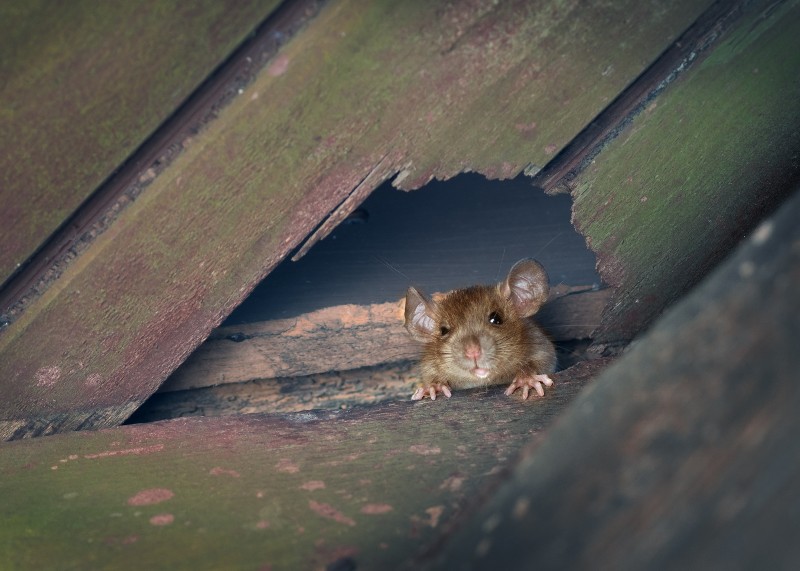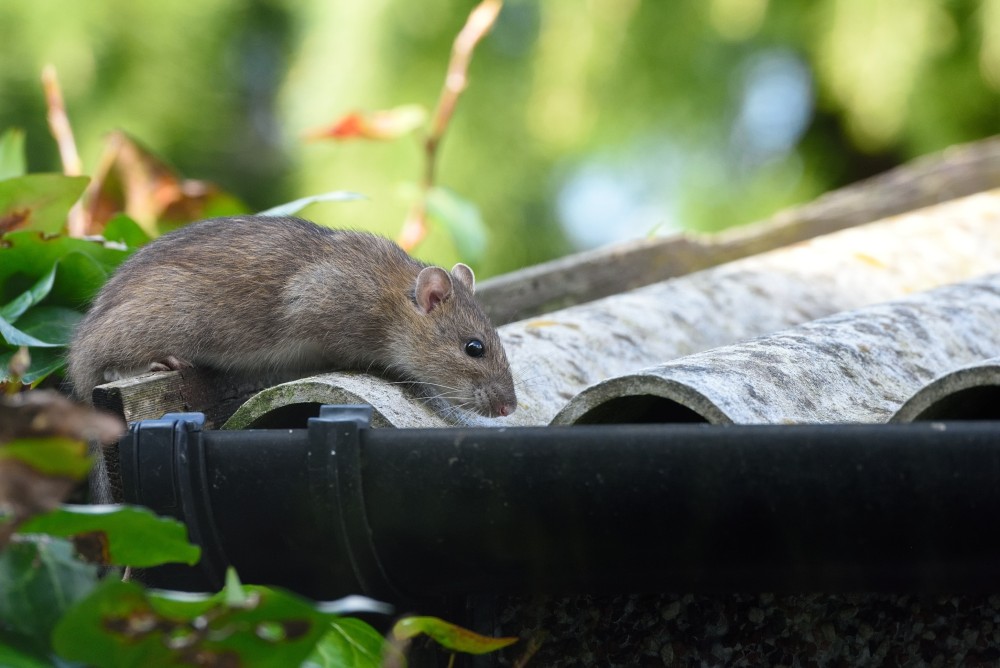If you’re a homeowner, it may seem like your house is under constant attack from weather, pests and the ravages of Father Time. From hail and wind to termites and mold, there are all sorts of things that can damage your largest investment. A commonly overlooked saboteur, the roof rat can cause significant damage while serving as vectors for dangerous diseases. Here’s what you should know about this pesky, rapidly reproducing rodent, along with some tips for protecting your roof and home from infestation.
What Are They?
Also known as black rats or ship rats, roof rats are a common long-tailed rodent, which is believed to originate in the Indian subcontinent. These days, it has become a worldwide nuisance affecting homeowners on multiple continents.
The rodent gets its name from its tendency to seek shelter in the higher areas of buildings. Usually smaller than 40 cm in length, roof rats are able to fit through holes as tiny as one-half inch in diameter. Since they like to be high in the air, the small rodents will often climb on tree branches or power lines to get onto a roof. From there, they can enter the home by taking advantage of existing cracks or tiny openings. They can also create openings by gnawing through building material using their exceptionally sharp teeth.
Once inside a home, roof rats can damage walls, baseboards and possessions by gnawing through them. They can also contaminate food and serve as troubling vectors of serious diseases.
Common Entry Points
Roof rats have the ability to access almost any area of a home, so it’s often difficult for homeowners to keep the pests out. Most often, the rodents will enter homes by:
- Chewing fresh entry holes
- Squeezing through damaged vent covers
- Invading gaps in shingles
- Pushing through cracks
In addition to being a major nuisance and disease vector, roof rats can cause indirect damage by increasing the size of existing holes in a roof or worsening shingle damage as they attempt to enter a home’s attic. This can allow water to enter the attic, resulting in serious rot and mold infestation that can cost thousands of dollars to repair. The rodents can also chew on electrical wires, damage furniture and rip up insulation as they attempt to make nests.

Signs of Roof Rats
There are many telltale signs of a roof rat infestation. First and foremost, if you see a dead or living roof rat, you can be sure there are a lot more around. Another common sign is the presence of small rodent droppings around the home. Fresh droppings will appear soft and moist, while old droppings look hard and dry. Roof rat droppings typically measure about 12 mm to 13 mm and usually have pointed ends. Gnaw marks, nests, damaged goods, greasy rub marks and the barn-like scent of urine-soaked hay are also indications of roof rat activity.
Other typical signs of an infestation include noises in walls and the attic or damaged electrical wires.
How to Get Rid of Roof Rats
To prevent infestation, it’s important to seal up any cracks or holes bigger than a quarter with a quality silicone caulk. You should also be sure that all vents and windows are screened. Keep your shrubs and trees trimmed back from the structure and cut limbs so they aren’t overhanging your home’s roof.
Since roof rats are drawn to easily accessible food sources, it’s best to keep trash in tightly capped receptacles and pick up any fruit that might fall from trees in your yard. You should also store dry goods and pet food in sealed containers. It can also help to eliminate exterior sources of water, including birdbaths, pet water dishes and even leaky sprinkler heads.
If you think you have a roof rat infestation in your home, you can try to eliminate them using mouse traps and poison products. Bear in mind, however, that it can be very difficult to get all the rats, and even one missed female can rapidly repopulate a home since they are capable of birthing six to eight babies up to six times per year. With this in mind, it’s generally best to call a professional exterminator to deal with your roof rat infestation.
At the same time, since it’s very common for roof rats to cause unseen damage to a home, it’s best to call a reputable local roofer to inspect your shingles, flashing and roof vents for any signs of damage. This can ultimately save you a lot of money down the line, especially when you consider that mold remediation can cost up to $10,000 in many instances.
A to Z Roofing specializes in residential roofing and repair. A locally owned Colorado company, we’ve been operating continuously throughout the Front Range for a quarter of a century, serving the needs of homeowners and local businesses. Contact our team of courteous professionals to learn how we can repair, restore or replace your aging or damaged roof.

